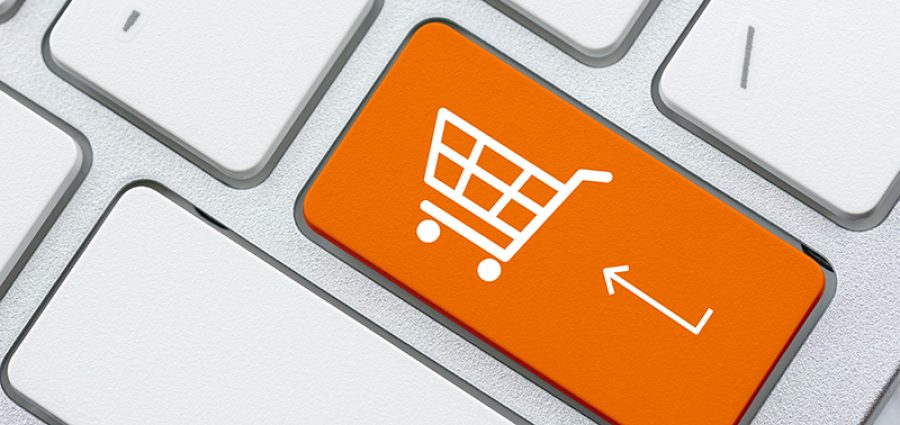Everything starts with what your customers need and want. Unfortunately, distributors’ buyers aren’t as simple to market to as B2C customers. For example, many industrial buyers move from project to project and need new solutions every few months. In contrast, others may manage inventories that carry the same items and frequently need to replenish their stock.
The B2B shopping process is long and often involves decision-makers from various departments. A great deal of time, research and product comparison goes into B2B purchasing. When designing your e-commerce experience, remember that your buyers are already under a lot of stress. To keep them happy, you should make your site user-friendly and informative. Customers should have the ability to quickly search for an item, read a detailed description, compare it to similar products and, finally, add it to their shopping cart.
What Functionality Does Your B2B Ecommerce Site Need?
Your e-commerce site should be convenient for everyone, including customers with fluctuating needs and those who need to reorder frequently. To do so, you should incorporate the following features:
- Shopping cart
- Accurate search relevancy
- PIM solution
- Content management system
- Recommendation systems (such as “frequently bought together” or “for you”)
- Easy reordering options
Industrial buyers expect the same level of care and personalization as B2C customers. To meet their needs and shopping preferences, you should design your e-commerce site with AI-powered tools and functions.
What Resources are Available?
Before you begin, consider what resources are available. Project success depends on various factors, including funding and support from your IT department, sales teams and upper management.
The effectiveness of your digital efforts will drop if representatives from every department are not on board. In some cases, your team may feel threatened and push back against new technology and workflows. To combat this, excellent communication and change management are essential.
What Are The Integration Requirements for Your B2B Ecommerce Site?
Different technology partners will have varying integration requirements. While most e-commerce tools and technologies work with multiple systems, some are more limited. As you look for a partner to help you build or enhance your e-commerce site, be sure to ask what their integration requirements are.
What Do You Need to Build a Business Case?
An excellent business case is essential for gaining approval to invest in a comprehensive e-commerce site. To create a convincing case, be sure to include the following factors:
- Cost and ROI — How much will it cost to make or update your e-commerce site? What long-term ROI can you expect
- Time/Resources Expended — How much time is required to build your site and integrate all necessary tools and functions? What internal personnel/resources are needed to ensure project success?
- Competitive Analysis of Competitors Using E-commerce — Which of your competitors already have an e-commerce presence? Are their sites well-made? How can you improve your shopping experience to compete and gain a larger wallet share?
- Impact on Sales Team — What impact will digitalization have on your sales team? How can your AI-powered e-commerce site enhance their jobs and make them more effective sellers?
How Will You Drive Customers to Your Site and Keep Them Going Back?
A well-designed website is meaningless if your customers don’t know it exists. So, once you have an excellent site in place, you need to have a strategy to drive attention to it. There are several simple ways to do this.
First, have your sales reps refer customers to your site. Customers with frequent reorder needs can save time and effort by purchasing items directly from your website. Embedded tools such as “buy again” options will make it easier for customers to find what they’re looking for and place orders quickly. By referring users to your e-commerce site, sales reps can improve customer satisfaction while freeing up time for other tasks.
Second, dedicate more marketing resources to your site. Although organic marketing methods — like word-of-mouth recommendations — are helpful, they only go so far. For your e-commerce site to have the most reach, you should set aside additional funding for advertising, content creation and SEO efforts.
Third, be sure to provide an unforgettable digital shopping experience. By integrating various AI-powered tools and functions, you can help customers seamlessly navigate your website to find the products and resources they need. A top-quality web experience will improve your customers’ loyalty and lifetime value.
How Will You Measure Success?
When creating or updating your e-commerce site, you should have a way to measure the effectiveness and success of your project. The best way to do this is by evaluating what percentage of your revenue flows through your website, what your ROI on that revenue is, and how it has grown total revenue over time.
A top-quality technology partner will have systems in place to measure the impact of artificial intelligence and other digital tools. For example, they will have data on how many people are visiting your e-commerce site, how various site functions boost revenue and how AI integration enhances your sales team’s effectiveness. If a technology provider says they can’t measure success, start looking for other potential partners.
What Questions Should Distributors Have For Their E-commerce Partner?
To ensure your e-commerce site is functional and effective, you must choose your technology partner carefully. When looking for a partner, you should have a list of questions ready to ask them, including:
- Are your solutions designed for B2B purchases?
- Have you built an e-commerce site for a distributor before?
- Can you handle the number of SKUs my company offers and demonstrate it with relevant case studies?
- What is the typical timeline for implementation?
- Do you have in-depth knowledge of my industry?
- Will you continue to offer support after the initial setup?
- Who will be overseeing my site creation/optimization? How qualified are they?
How will your technology solutions improve my customers’ buying journey? For modern distributors, having an informative, easy-to-use e-commerce site is essential. Integrating artificial intelligence and other tools into your B2B shopping experience will make your sales team more effective and your customers more satisfied.
Benj Cohen founded Proton.ai to help distributors harness cutting-edge artificial intelligence. He learned about distribution firsthand at Benco Dental, a business started by his great-grandfather. Later, while studying applied math and data science at Harvard University, Cohen saw an opportunity to bring his two worlds together. He’s on a mission to supply distributors with the innovative technology they need to thrive in modern markets. Reach him through proton.ai.
Related Posts
-
FleetPride executives say digital, customer-focused service plans are tailor made for distributors looking to buck…
-
Scott Pierson of Bluon outlines the challenges of identifying a true e-commerce solution in the…
-
E-commerce data may be more important than products you sell. Why? For one, your troves…






